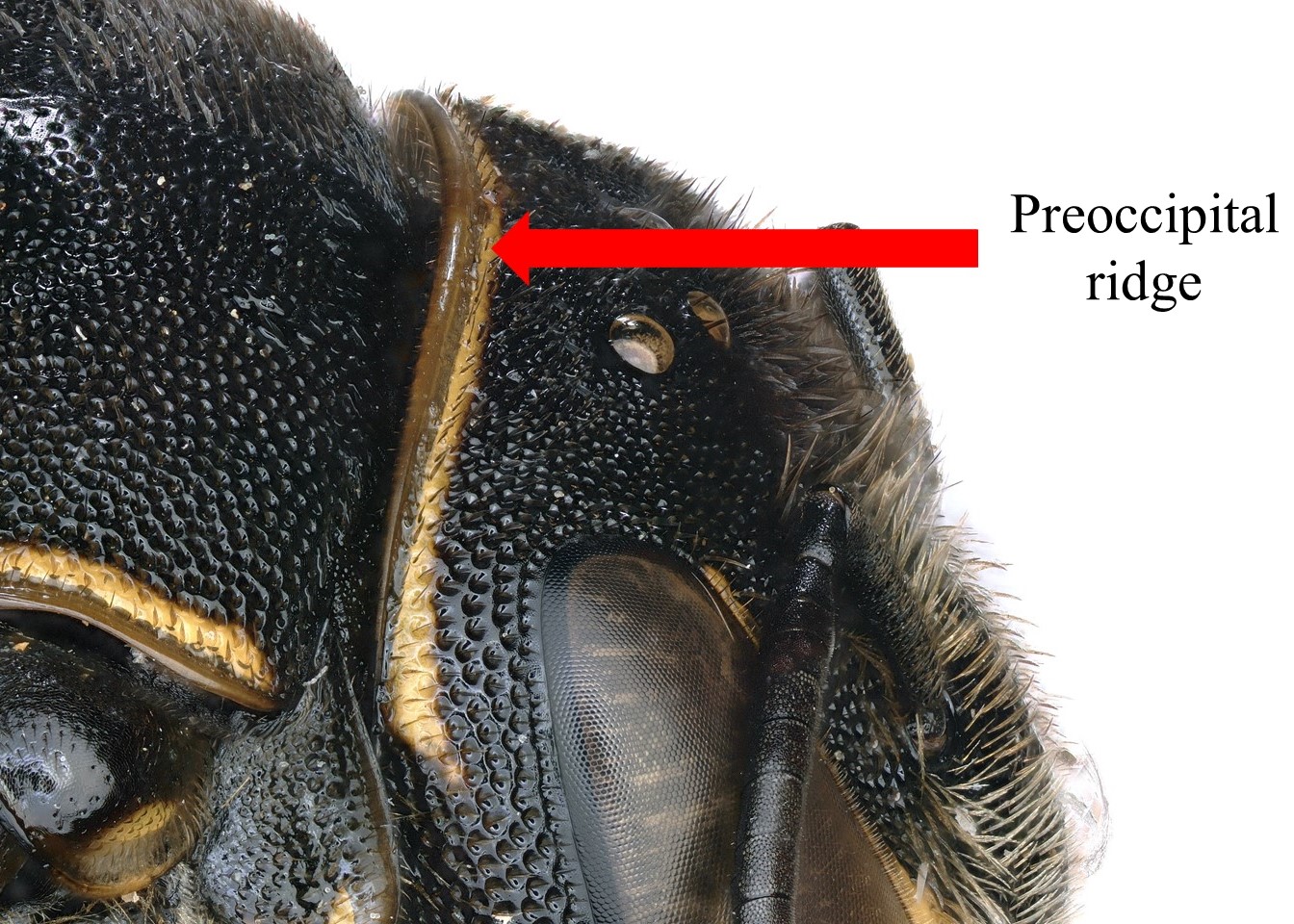Family: Megachilidae
Subfamily: Megachilinae
Tribe: Anthidiini
Genus: Apianthidium Pasteels, 1969
Subgenera: none
Common name: none
Apianthidium range in body length from 12–13 mm and have mostly yellow to yellow-reddish head and thorax. Their tergaterga:
the segments on the top side of the abdomen, often abbreviated when referring to a specific segment to T1, T2, T3, T4, T5, T6, or T7 are mostly yellow at the base with the posterior half of each tergumtergum:
are mostly yellow at the base with the posterior half of each tergumtergum:
the segments on the top side of the abdomen, often abbreviated when referring to a specific segment to T1, T2, T3, T4, T5, T6, or T7 black (Michener 2007Michener 2007:
black (Michener 2007Michener 2007:
Michener, C.D. 2007. The Bees of the World (2nd ed.). Johns Hopkins University Press, Baltimore and London, 953 pp.).
Apianthidium contains one species, A. apiforme (Michener 2007Michener 2007:
Michener, C.D. 2007. The Bees of the World (2nd ed.). Johns Hopkins University Press, Baltimore and London, 953 pp.); none are known to occur in the U.S. or Canada.
(modified from Michener 2007Michener 2007:
Michener, C.D. 2007. The Bees of the World (2nd ed.). Johns Hopkins University Press, Baltimore and London, 953 pp. unless otherwise stated)
 without carinacarina:
without carinacarina: simple, unmodified (Pasteels 1969Pasteels 1969:
simple, unmodified (Pasteels 1969Pasteels 1969:Apianthidium resembles Trachusa due to similar body form and size. However, Apianthidium can be differentiated from Trachusa by the distinctly hooked apices of the hind tibial spurs, and the middle tibiatibia:
the segment of the leg, between the femur and the tarsus as broad, or nearly as broad, as hind tibiatibia:
the segment of the leg, between the femur and the tarsus (Michener 2007Michener 2007:
Michener, C.D. 2007. The Bees of the World (2nd ed.). Johns Hopkins University Press, Baltimore and London, 953 pp.).
There are no known invasives.
Apianthidium is only known to occur in Borneo (Michener 2007Michener 2007:
Michener, C.D. 2007. The Bees of the World (2nd ed.). Johns Hopkins University Press, Baltimore and London, 953 pp.).
Distribution map generated by Discover Life -- click on map for details, credits, and terms of use.
Michener, C.D. 2007. The Bees of the World (2nd ed.). Johns Hopkins University Press, Baltimore and London, 953 pp.
Pasteels, J.J. 1969. La systématique générique et subgénérique des Anthidiinae (Hymenoptera, Apoidea, Megachilidae de l'ancien monde. Société royale d'entomologie de Belgique 31: 3-148.